Do you have a question about the Sharp AQUOS LC-46LE830U and is the answer not in the manual?
French title for the operation manual.
Crucial safety instructions regarding fire and electric shock hazards.
Comprehensive list of precautions for safe installation, usage, and maintenance.
Guidelines to prevent accidents involving children and safe TV wall mounting procedures.
Overview of provided accessories and steps for attaching the TV stand.
Essential setup steps and instructions for operating the TV and devices with the remote.
Connecting antennas and replacing remote control batteries for optimal TV operation.
Diagrams identifying TV parts, ports, and remote control buttons.
Understanding HD requirements and visual guides for various external device connection types.
Steps to select and view content from connected external sources.
How to connect players and receivers using HDMI cables for high-quality output.
Instructions for connecting devices with DVI output via a conversion adapter.
Guide for connecting devices using component video and audio cables.
How to connect AV devices using composite video and audio cables.
Connecting audio amplifiers using optical digital or analog audio cables.
Connecting AV receivers for surround sound systems.
Instructions for connecting a computer via HDMI, DVI-HDMI, or PC IN (RGB) cables.
Basic operations for turning the TV on/off and the guided process for initial configuration.
Setting the user interface language and choosing the optimal TV placement.
Connecting signal sources, scanning channels, and configuring antenna settings.
Functions for adjusting audio levels and navigating channels directly.
Using features like sleep timer, returning to previous channels, and pausing images.
Selecting picture modes, input sources, and launching internet applications.
Configuring subtitles, input labels, and specific HDMI connection parameters.
Adjusting picture aspect ratio and zoom for optimal viewing of different content.
How to access and operate the TV's on-screen menu system using the remote or touch panel.
Comprehensive adjustments for image quality, including mode, contrast, brightness, and color.
Adjusting audio preferences like volume, equalizer, sound modes, and voice clarity.
Managing power saving, auto-off timers, and audio-only modes.
Various system settings including view modes, app access, audio options, and link settings.
Initial configuration steps including auto-installation, channel tuning, and language settings.
Accessing system info, subtitle data, software updates, and help resources.
System for filtering TV programs based on ratings and content advisories.
Connecting and preparing USB drives or DLNA servers for media playback.
Guide for browsing and selecting photos, music, or videos from connected USB or DLNA sources.
Controls and features for viewing photos, listening to music, and watching videos from media sources.
Streaming media from DLNA servers and managing DivX video compatibility.
Programming the remote for connected devices and finding manufacturer codes.
Explanation of the AQUOS LINK feature for interactive device control via HDMI CEC.
Configuring the AQUOS LINK system for seamless device interaction and control.
How to connect and adjust a computer's display settings on the TV screen.
Fine-tuning PC image display and configuring audio input sources.
Connecting and controlling the TV using RS-232C or IP commands from a computer.
Establishing an internet connection using Ethernet or Wireless LAN and configuring network settings.
Detailed guide for setting up a wireless network connection using WPS or manual configuration.
Configuring network settings, interactive service, and verifying internet connectivity.
Using the TV's web browser, managing security, and configuring privacy settings.
Functions of the browser's toolbar and how to manage multiple web pages using tabs.
Saving, opening, organizing, and deleting favorite web pages.
Adjusting browser display, zoom, coding, and configuring security options.
Accessing and managing online services like Netflix and VUDU.
Legal notices regarding third-party content access and usage.
Instructions for detaching the TV stand and safely mounting the TV on a wall.
Information on available optional accessories for enhancing TV functionality.
Solutions for common TV operational problems, error messages, and performance issues.
Procedures for resetting the secret number and a list of registered trademarks.
Technical details regarding the TV's wireless network capabilities and compliance.
Comprehensive technical data for the TV, including dimensions, power, and connectivity options.
Information on software used, licenses, and copyright holders.
Details of the limited warranty, including coverage, exclusions, and duration.
Technical drawings showing dimensions for specific TV models.
Technical drawings showing dimensions for specific TV models.
French title for the operation manual.
Crucial safety instructions regarding fire and electric shock hazards.
Comprehensive list of precautions for safe installation, usage, and maintenance.
Guidelines to prevent accidents involving children and safe TV wall mounting procedures.
Overview of provided accessories and steps for attaching the TV stand.
Essential setup steps and instructions for operating the TV and devices with the remote.
Connecting antennas and replacing remote control batteries for optimal TV operation.
Diagrams identifying TV parts, ports, and remote control buttons.
Understanding HD requirements and visual guides for various external device connection types.
Steps to select and view content from connected external sources.
How to connect players and receivers using HDMI cables for high-quality output.
Instructions for connecting devices with DVI output via a conversion adapter.
Guide for connecting devices using component video and audio cables.
How to connect AV devices using composite video and audio cables.
Connecting audio amplifiers using optical digital or analog audio cables.
Connecting AV receivers for surround sound systems.
Instructions for connecting a computer via HDMI, DVI-HDMI, or PC IN (RGB) cables.
Basic operations for turning the TV on/off and the guided process for initial configuration.
Setting the user interface language and choosing the optimal TV placement.
Connecting signal sources, scanning channels, and configuring antenna settings.
Functions for adjusting audio levels and navigating channels directly.
Using features like sleep timer, returning to previous channels, and pausing images.
Selecting picture modes, input sources, and launching internet applications.
Configuring subtitles, input labels, and specific HDMI connection parameters.
Adjusting picture aspect ratio and zoom for optimal viewing of different content.
How to access and operate the TV's on-screen menu system using the remote or touch panel.
Comprehensive adjustments for image quality, including mode, contrast, brightness, and color.
Adjusting audio preferences like volume, equalizer, sound modes, and voice clarity.
Managing power saving, auto-off timers, and audio-only modes.
Various system settings including view modes, app access, audio options, and link settings.
Initial configuration steps including auto-installation, channel tuning, and language settings.
Accessing system info, subtitle data, software updates, and help resources.
System for filtering TV programs based on ratings and content advisories.
Connecting and preparing USB drives or DLNA servers for media playback.
Guide for browsing and selecting photos, music, or videos from connected USB or DLNA sources.
Controls and features for viewing photos, listening to music, and watching videos from media sources.
Streaming media from DLNA servers and managing DivX video compatibility.
Programming the remote for connected devices and finding manufacturer codes.
Explanation of the AQUOS LINK feature for interactive device control via HDMI CEC.
Configuring the AQUOS LINK system for seamless device interaction and control.
How to connect and adjust a computer's display settings on the TV screen.
Fine-tuning PC image display and configuring audio input sources.
Connecting and controlling the TV using RS-232C or IP commands from a computer.
Establishing an internet connection using Ethernet or Wireless LAN and configuring network settings.
Detailed guide for setting up a wireless network connection using WPS or manual configuration.
Configuring network settings, interactive service, and verifying internet connectivity.
Using the TV's web browser, managing security, and configuring privacy settings.
Functions of the browser's toolbar and how to manage multiple web pages using tabs.
Saving, opening, organizing, and deleting favorite web pages.
Adjusting browser display, zoom, coding, and configuring security options.
Accessing and managing online services like Netflix and VUDU.
Legal notices regarding third-party content access and usage.
Instructions for detaching the TV stand and safely mounting the TV on a wall.
Information on available optional accessories for enhancing TV functionality.
Solutions for common TV operational problems, error messages, and performance issues.
Procedures for resetting the secret number and a list of registered trademarks.
Technical details regarding the TV's wireless network capabilities and compliance.
Comprehensive technical data for the TV, including dimensions, power, and connectivity options.
Information on software used, licenses, and copyright holders.
Details of the limited warranty, including coverage, exclusions, and duration.
Technical drawings showing dimensions for specific TV models.
Technical drawings showing dimensions for specific TV models.
| Display diagonal | 46 \ |
|---|---|
| Display brightness | - cd/m² |
| Native aspect ratio | 16:9 |
| Native refresh rate | 120 Hz |
| Supported video modes | 1080p |
| Viewing angle, vertical | 176 ° |
| Contrast ratio (dynamic) | 6000000:1 |
| Supported graphics resolutions | 1920 x 1080 (HD 1080) |
| 3D | No |
| Product color | Black |
| Panel mounting interface | - mm |
| Tuner type | Analog & digital |
| Analog signal format system | NTSC |
| Digital signal format system | ATSC |
| RMS rated power | 20 W |
| Number of speakers | 2 |
| HDCP | - |
| HDMI version | 1.4 |
| HDMI ports quantity | 4 |
| USB 2.0 ports quantity | 0 |
| Component video (YPbPr/YCbCr) in | 1 |
| Power consumption (standby) | - W |
| Power consumption (typical) | 180 W |
| Sustainability certificates | ENERGY STAR |
| Depth (with stand) | 293 mm |
|---|---|
| Height (with stand) | 711 mm |
| Weight (with stand) | 23000 g |
| Depth (without stand) | 41 mm |
| Width (without stand) | 1072 mm |
| Height (without stand) | 663 mm |
| Weight (without stand) | 19000 g |


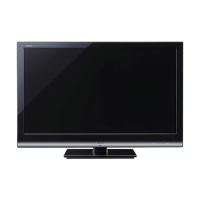

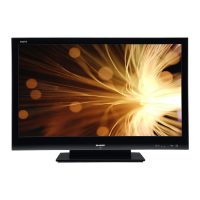
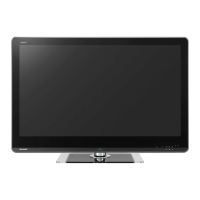
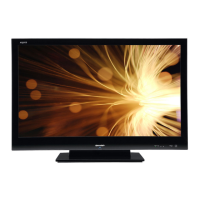

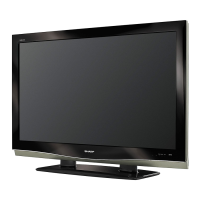
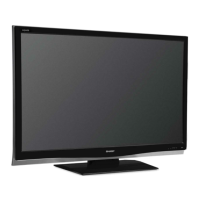
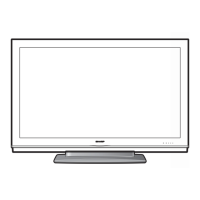
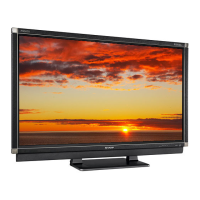
